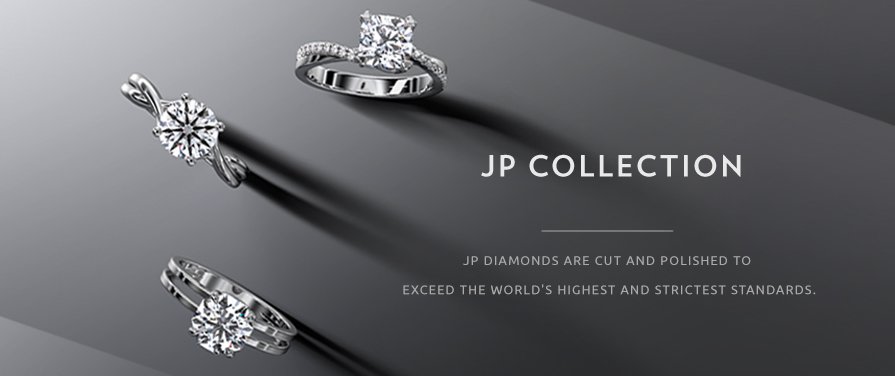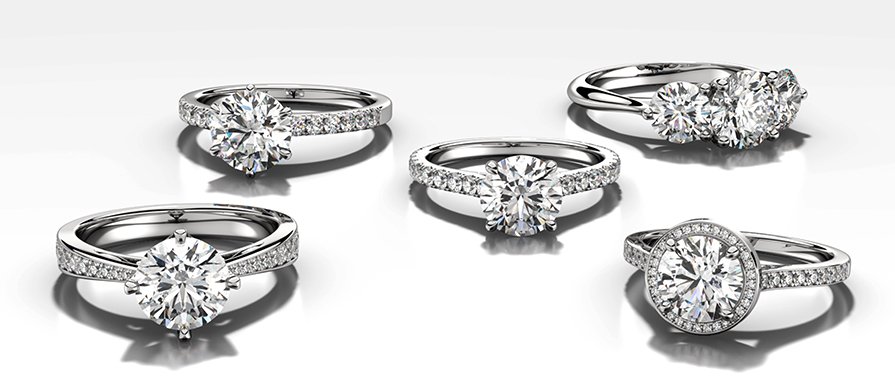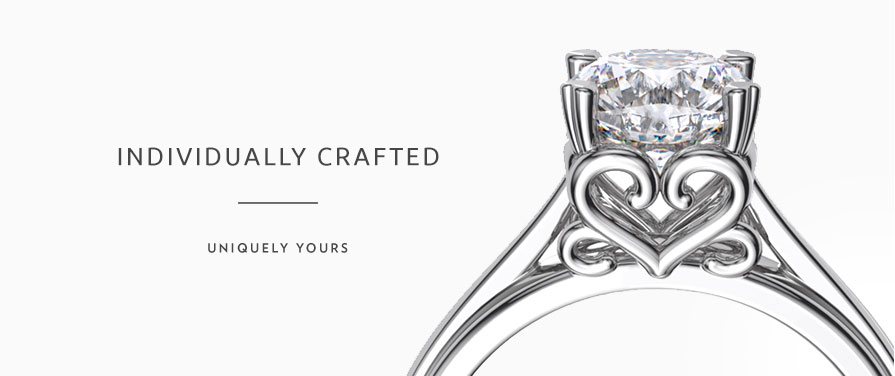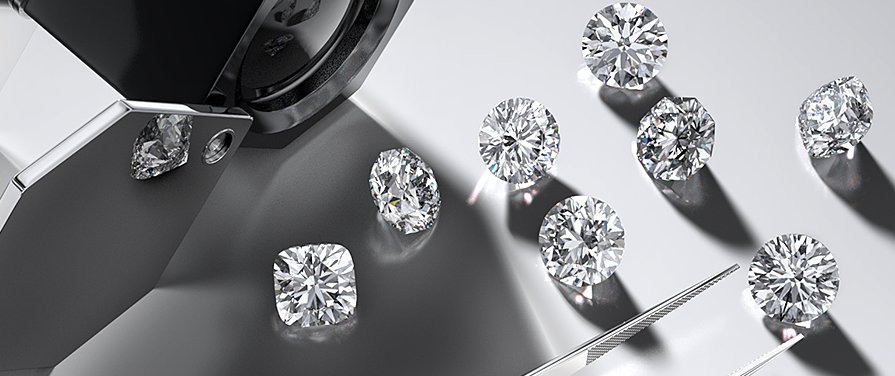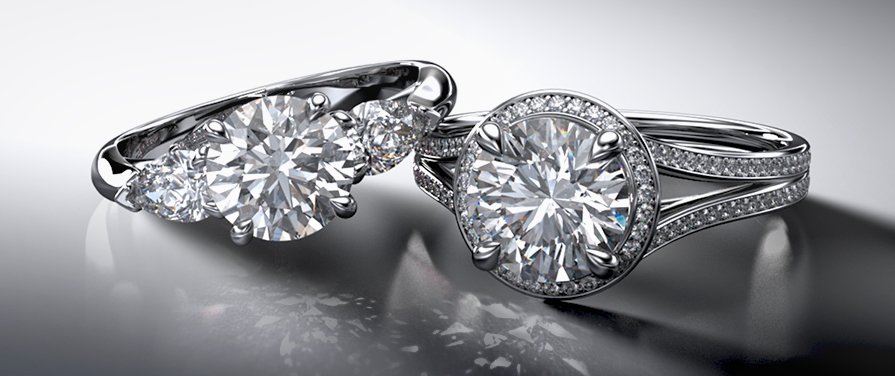HEARTS & ARROWS
History
The Hearts and Arrows cut was first developed in the 1980s by Japanese diamond cutters, developing on the proportions established by Marcel Tolkowsky in 1919, producing round brilliant diamonds cut so precise that they would produce
Hearts & Arrows Scope
The Hearts & Arrows Scope is used to analyze the optical symmetry of a diamond and optical symmetry simply refers to light reflection taking place internally inside the diamond. It shows how precise the angles and proportion of a diamond are cut which exhibit the level of craftsmanship. When viewing the diamond through the Hearts & Arrows scope,
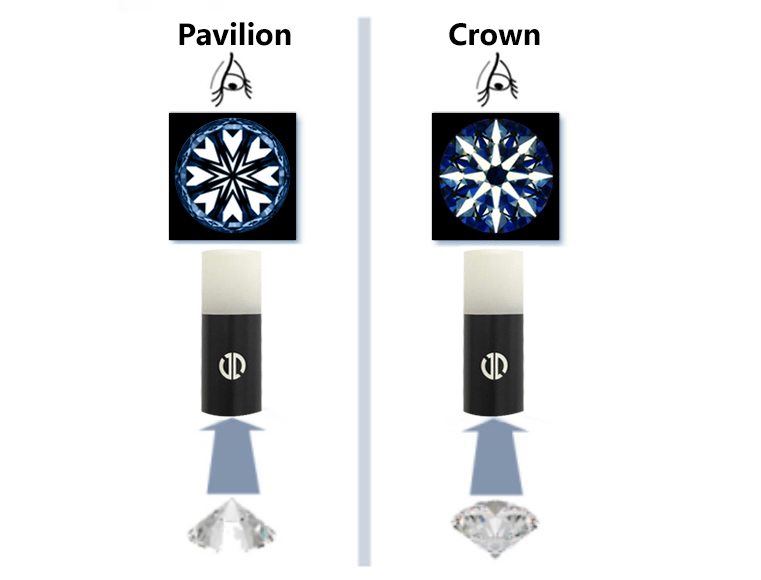
Factors affecting Hearts & Arrows
There are 5 factors affecting the formation of hearts and arrows namely pavilion angle, crown angle, table size, lower girdle length and star facet length.
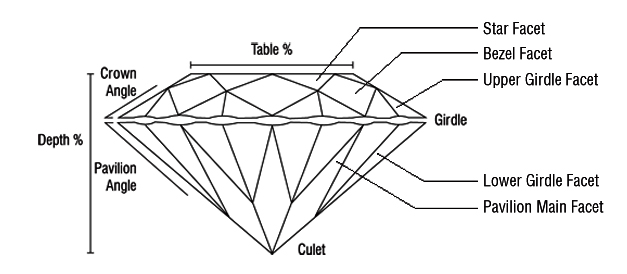
DNA of Hearts and Arrows:
Pavilion Angle
Pavilion angle is the most important factor affecting light performance because the pavilion main facets act as mirrors reflecting light that enters the diamond to the viewer. If the angle is too steep, light leakages
Below shows an example of how
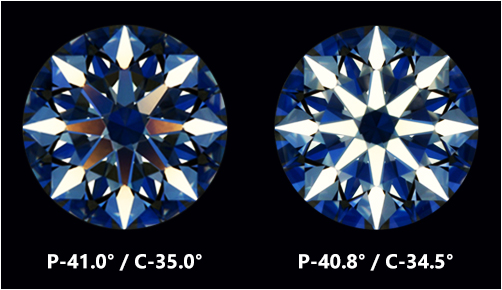
Crown Angle
Crown angle is another factor affecting the formation of arrows. It is important that both the crown and pavilion angles complement each other to achieve a pattern of solid arrows. For example, if the angle of the pavilion is slightly steeper than optimum, the crown angle can compensate by having a shallower angle and vice versa. If both the crown and pavilion angles are cut too steep, the arrow shafts disappear as shown in the earlier example. Below shows another bad combination with a very steep crown angle coupled with a shallow pavilion angle (known as
Table Size
Table size affects both the appearance of the hearts and arrows. From the pavilion view, the optimum table size

From the crown view, the table size affects the table reflection at the

Lower Girdle length
Lower girdle length is paramount to the formation of hearts and arrows. These 16 facets create the 8 pavilion main facets which are the foundation of the hearts and arrows. By altering the length of the lower girdle, it changes the shape of the hearts and arrows. In the
In the heart view, the longer the lower girdle, the further apart is the space between the hearts and the

Star Facet
Star facets act as hot spots (fire/dispersion of light) for the diamond and also affect the appearance of the hearts and arrows.
In the

In the heart view, the star facets together with table facet are responsible
Hearts formation:
Below image illustrates how hearts are created from the pavilion main facets. Viewing through the pavilion, the blue pavilion main facet (shown at 10 o’clock position) is reflected 180o onto the opposing lower girdle, creating 2 opposite halves of different hearts (Shown at 4 o’clock position). Therefore, creating one complete heart requires 2 reflected pavilion main facets. Any slight variation in the angles and length of the facets will result in uneven and deformed hearts.
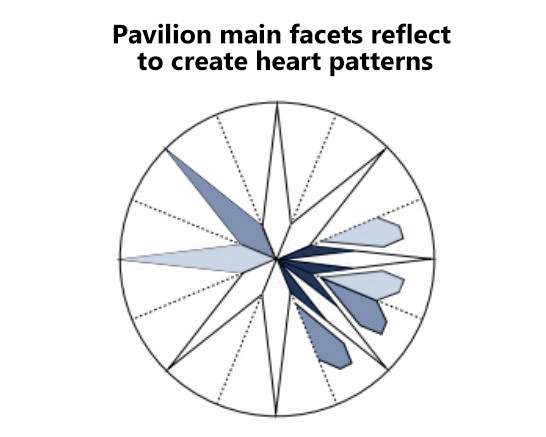
The reflections of the 2 pavilion main facets forming the heart are then further shaped by the table and star facets, which round off the lobes or shoulders of the heart.
The “V” shapes as shown in red underneath the hearts are the outcome of all 24 pavilion facets of pavilion main and lower girdle being polished and cut to superior precision.
Hence, in order to achieve 8 optical symmetrical perfect hearts, all 24 pavilion facets, the table and star facets have to be cut to utmost precision and careful attention must be paid to the crown and pavilion angles.
Arrows Formation:
Below images illustrate how the arrows are formed. Firstly, the shaft of an arrow which is the pavilion main facet is visible when the diamond is viewed directly through the crown from the table up position. These are known as see-through facets. The pavilion main facet is also reflected 180o, forming the
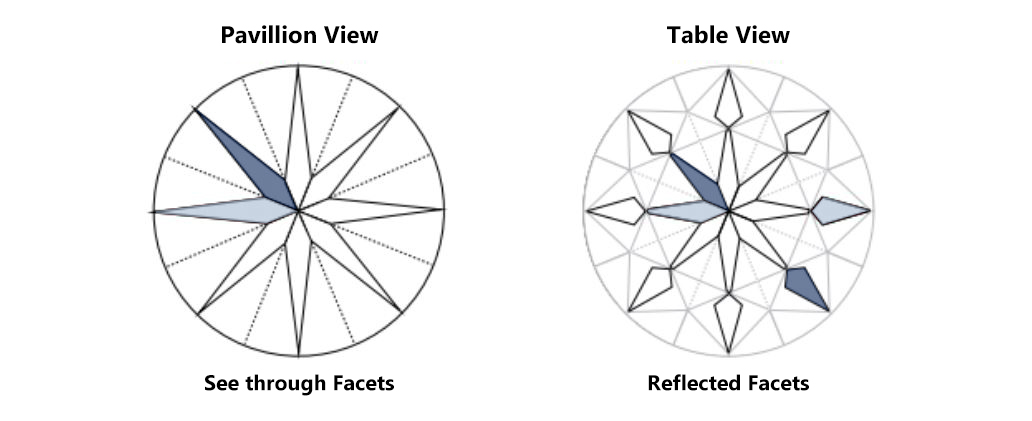
Therefore, it takes 2 different pavilion main facets to form one complete arrow and if the cut of
Evaluating Hearts and Arrows:
Hearts:
Hearts are visible when viewing the diamond through the pavilion from the bottom. To qualify for a perfect heart, there are 3 factors to consider. Firstly, the shape and size of the hearts must be even and uniform. Secondly, the space between the heart and the arrowhead should not be fused together. Lastly, there should not be any cleft in the hearts.
Below shows an example of
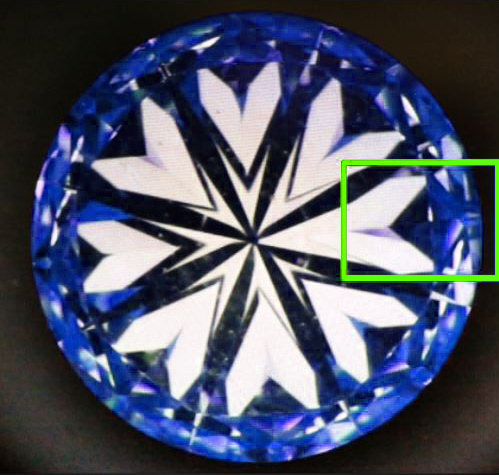
The image below shows how a typical perfect hearts should look like.
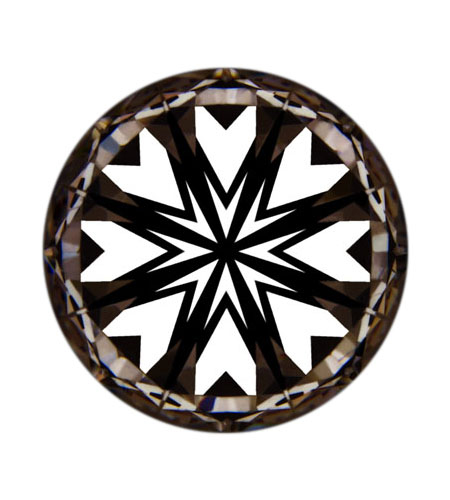
Arrows:
Arrows are visible when the diamond is viewed through the crown from the table up position. To achieve perfect arrows, all arrows must be symmetrical, and the
Below image shows
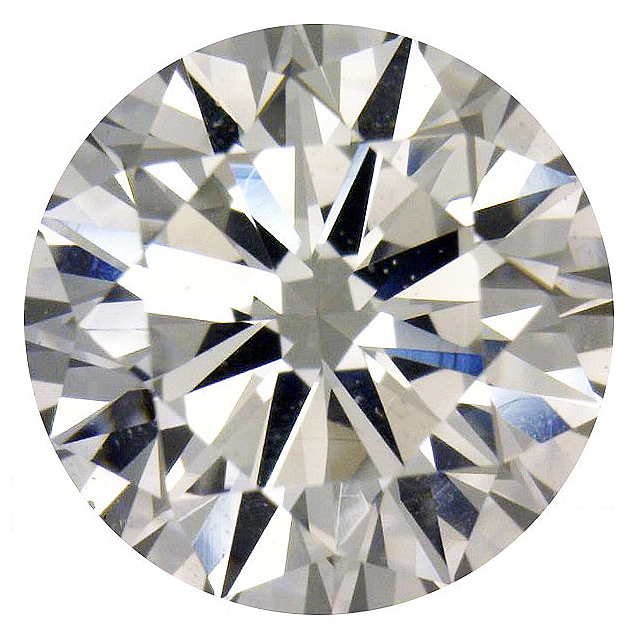
The image below shows how typical perfect arrows should look like.
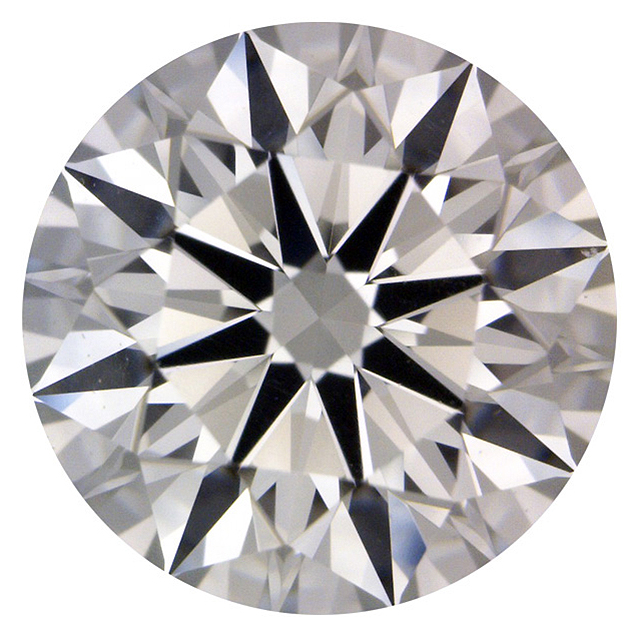
Facet Yaw:
Facet yaw refers to facet imperfection due to poor cutting and polishing techniques. This happens because cutters tend to cheat when polishing diamonds, sometimes to save or retain weight on the diamond and the result is having an uneven polished facet surfaces.
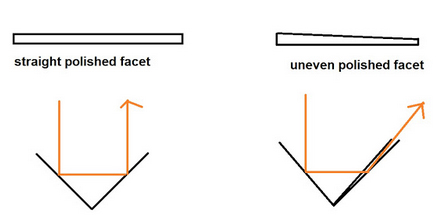
A straight polished facet allows light to reflect off the facet evenly and uneven polished facets cause light to reflect irregularly in random directions. The best way to detect a yawed diamond is by analyzing the heart image through a Heart and Arrow Scope. In the presence of a facet yaw, the heart image will show distorted heart as the facet is uneven. This causes the reflection to be unaligned with the opposing half of the heart. Below image shows an example of
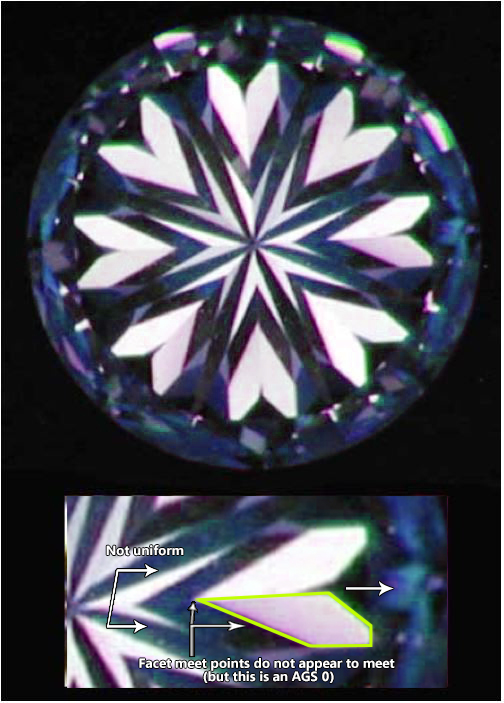
Limitations of the Hearts & Arrows Scope
The Hearts & Arrows scope is a useful tool to analyse the optical symmetry of the diamond. However, it does not reveal a diamond's light leakages. For example,






